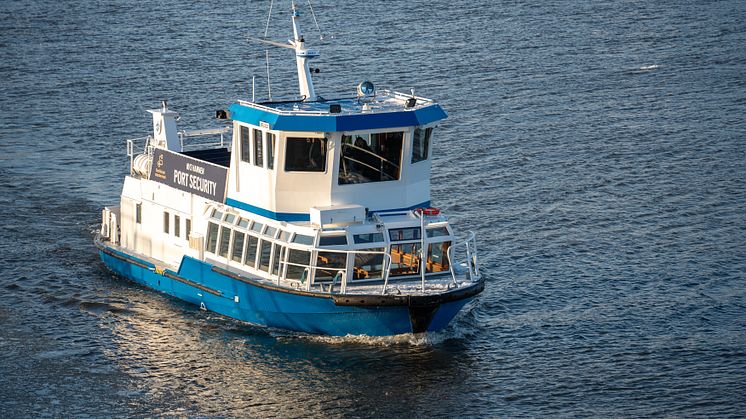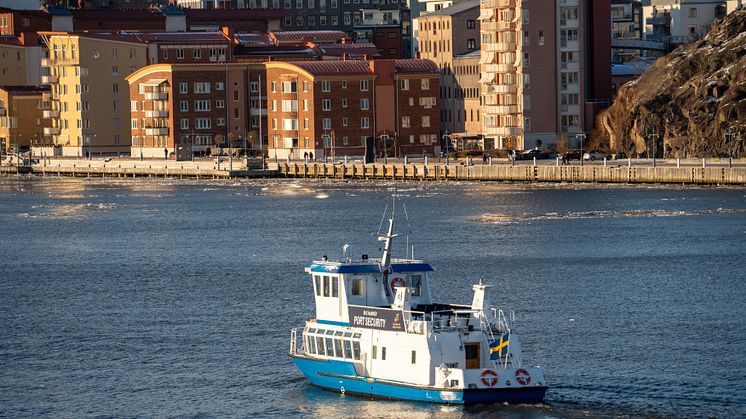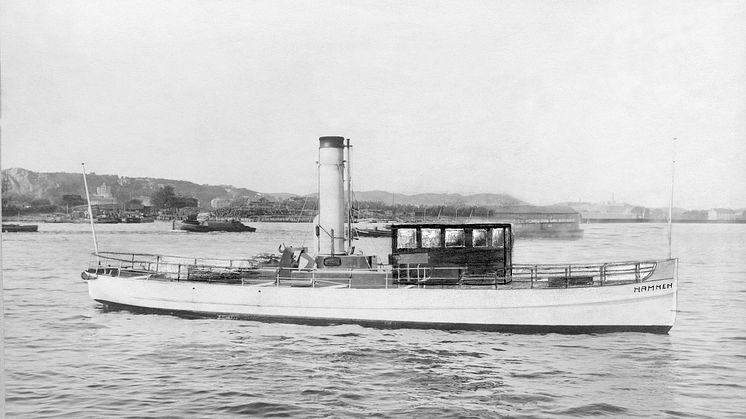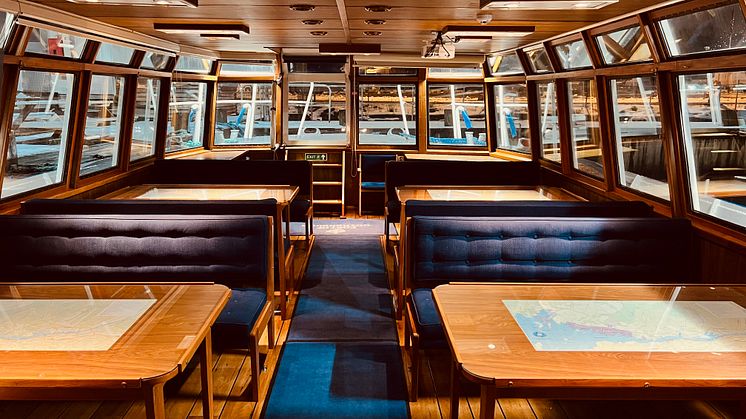
Press release -
After 100 years – The Port of Gothenburg’s inspection vessel is now electrified
Having served round the clock as an inspection vessel in the Port of Gothenburg since 1979, M/S Hamnen has now been converted to electric propulsion. Following today's re-inauguration, the vessel is expected to remain in service for many years to come.
M/S Hamnen is the vessel always at the heart of the action, first on the scene when unforeseen events occur in the Port of Gothenburg, the largest port in Scandinavia. The vessel undertakes a variety of tasks, but its foundation lies in representing the Port Authority and ensuring compliance with regulations according to port ordinances. Around the clock, all year round.
David Falk is the skipper of M/S Hamnen and has also been the project manager for the vessel's electrification. M/S Hamnen has inspected the port area for 100 years - since 1924. Over the years, the vessel has been replaced twice. The third, current edition has been in operation since 1979.
"M/S Hamnen is in very good condition, and there is no other vessel better suited for the mission. When we started looking at electrification, we quickly concluded that it was better to retrofit rather than replace. This further reduces emissions as the vessel does not continue with diesel operation under a new owner," says David Falk.
M/S Hamnen is in active operation for approximately 1200 hours per year. With the previous engine, the vessel consumed 25,000 liters of diesel, resulting in 67 tons of carbon dioxide emissions - equivalent to 15% of the Gothenburg Port Authority company’s total emissions - which are now eliminated.
Better range than expected
A total transformation has taken place in the engine room as the previous diesel engine has been replaced by a brand-new electric motor with 250 kW of power. In addition, a battery bank of 520 kWh has been installed, which can be supplemented with additional battery capacity in the future if required. A diesel auxiliary engine has also been installed, which can be activated in exceptional circumstances.
"This gives us increased redundancy and greater flexibility that may be required for special deployments, unforeseen events, or extreme weather conditions," says David Falk.
The vessel left the Ö-varvet shipyard on Öckerö in the Gothenburg archipelago in January. In addition to electrification, the vessel also received a new bridge, as well as a range of measures to enhance working environment and extend lifespan. Since then, the vessel has undergone real-world testing before today's official re-inauguration.
"During the testing period, we noticed that the range is significantly better than we had anticipated, despite winter testing. The goal is to operate on electricity 90% of the time, but so far, we have not needed to switch to the diesel engine even once to extend the range," says David Falk, continuing:
"Furthermore, the onboard working environment has significantly improved thanks to the new bridge and, not least, the quiet electric propulsion. Overall, it's a highly successful project in every way, and I want to thank everyone involved, from the Swedish Transport Agency to Ö-varvet and all other suppliers and partners who have been involved in various ways."
"Of course, we must lead the way"
For the Gothenburg Port Authority, the electrification of M/S Hamnen is not only a step in achieving the port's climate goal of a 70% reduction in port-related emissions from Vinga out to sea, to the entire Gothenburg area on land by 2030, argues Viktor Allgurén, Head of Innovations at the Gothenburg Port Authority:
"The electrification of M/S Hamnen is important as the vessel is a symbol of the Port of Gothenburg as its inspection and representation vessel. We have high expectations that all actors in the port contribute to reducing emissions, then we must lead the way and set an example."
Fact file: M/S Hamnen
Owner and operator: The Gothenburg Port Authority through the Harbour Master's Office and Harbour Master Pontus Bengtsson who is responsible for the vessel.
Length: 20.3 m
Width: 5.7 m
Draft: 2.6 m
Cruising speed: 8 knots
Operating hours/year: 1200
New electric motor: 250 kW
Battery bank: 520 kWh
Charger: 125 amp charger at home quay
Range: 6-7 hours at ecospeed
Investment: 19.8 million SEK (approx. €1,7 million)
Topics
Fact file: Port of Gothenburg
The Port of Gothenburg is the largest port in Scandinavia. Around 30% of Swedish domestic and foreign trade passes through the Port of Gothenburg and over 50% of all container traffic. The port is a full-service port, and offers industry guaranteed, climate-smart access to the whole world. Direct services to key markets ensure highly efficient, sustainable, and reliable transport 24 hours a day, 365 days a year. The focus is firmly on sustainability, innovation, and digitalisation in a concerted effort to maintain the ongoing development of climate-efficient freight transport and calls by vessels. With over 30 rail shuttles offering daily departures, companies throughout Sweden and Norway have a direct, climate-neutral service to the Port of Gothenburg. The port handles energy products, vehicles, ro-ro units, containers and passengers. 22,000 people are employed at the port.
Follow us on:
Facebook
Instagram
LinkedIn
Twitter
www.portofgothenburg.com







